Visit to Cades Cove, Tennessee
October 5, 2006
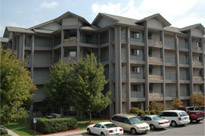 Thanks to Anne Newton, we spent a couple of relaxing days at Laurel Heights in Pigeon Forge, Tennessee. Our notable excursion was down into the Smoky Mountains National Park and around the loop at Cades Cove. |  |
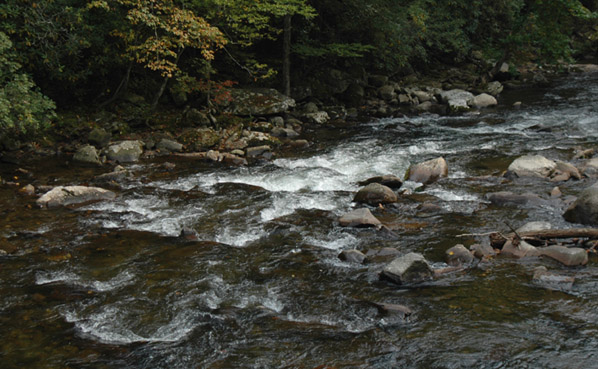
We drove from Pigeon Forge through Gatlinburg and into the Park along the Little River Road. The Little River was delightful and relaxing. We followed the river in the direction of Cades Cove. 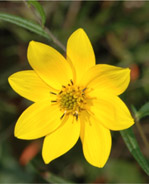 | 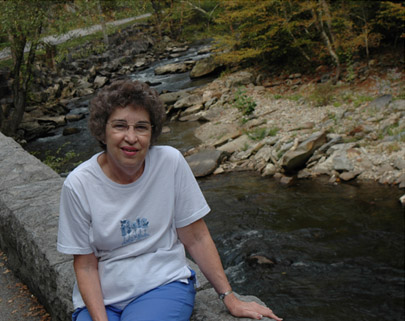 |
 | 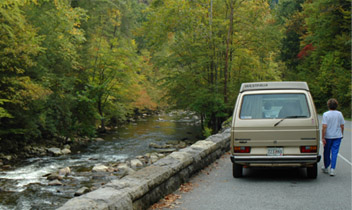 |
We stopped to look at a nice waterfall along the Little River. The view of the river above right was typical of the views along this stretch, so it was a very nice river drive, comparable to a couple we had done in Oregon.
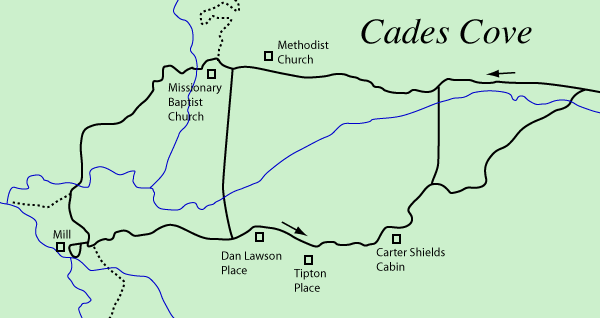
After being visited by native Americans for a long period, Cades Cove was first settled by the Joshua Jobe family and others in the 1820s. The population reached 685 (132 families) in 1850. It dropped to 275 in 1860 but gradually rose until 1900 when there were about 125 families (708 persons) living in the Cove. In 1934 Cades Cove became part of the Smoky Mountain National Park.
Entering Cades Cove on the one way loop road, our first impression was that of woods and open fields with horses. It was immediately relaxing and a contrast to the curving road along the rivers. |  |
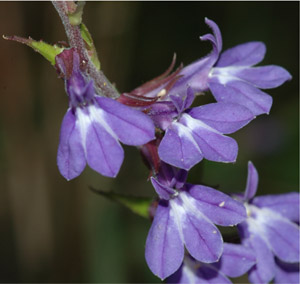 |  |
There were some wildflowers, but the main view was grassy fields, trees, and the blue tiers of the Smoky Mountains.

 | We had just entered the first patch of woods when we spotted this deer out in the woods. It was almost red in color. This lovely lady was certainly cooperative in posing for me. |
 |  | 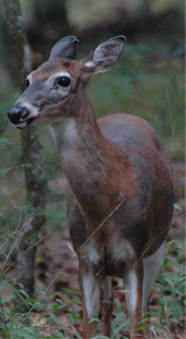 |
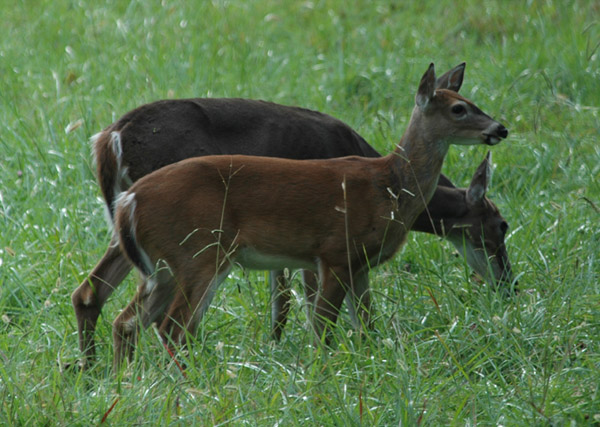
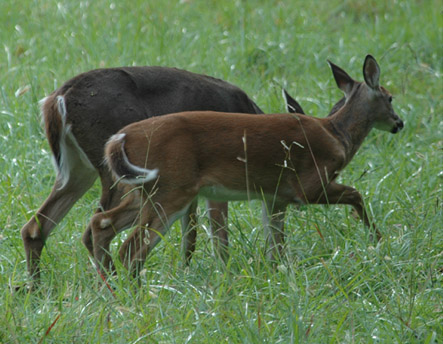 | Just a short distance further along the road, we came upon a major deer-jam as cars stopped to see this doe and her yearling faun. The deer were no more than 50 feet off the road in the meadow, but they did not appear to be bothered at all by the people. |
We stopped by the Methodist Church, one of the three churches in the valley. 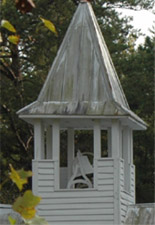 | 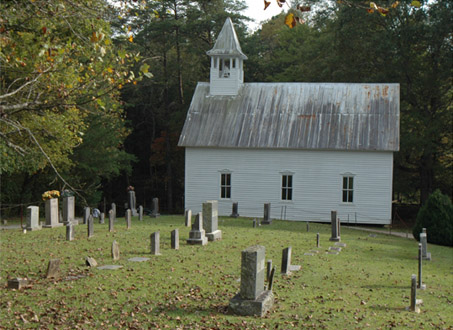 |
There were a number of recent headstones, indicating that the church had retained the right to bury in the cemetary. We saw the name Tipton on several stones - one of the original family names in the valley. One of the headstones was recent, belonging to the author of "The Cades Code Story".
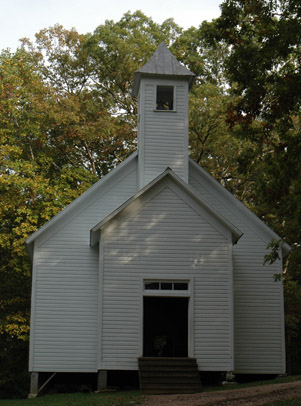 Brenda went to the door of the church and found it to be well-constructed and well-maintained. She also explored the cemetary and found the outhouse out back, similar to the one she remembered at the church where she grew up. | 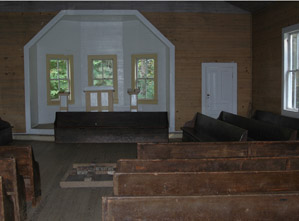  |

 |  |
We drove the van around the 11 mile, single lane road. There were enough turnouts that you could stop and look at things, like this red pod that caught Rod's eye.
 | 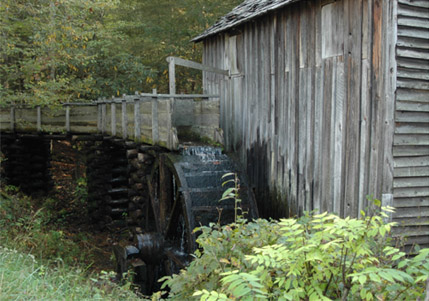 |
The biggest collection of historical buildings was at the original location of the grist mill, named the John P. Cable Grist Mill. A long wooden flume feeds from a long mill race that connects to the stream 100 yards or more upstream to the millpond and dam.
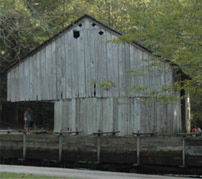 | 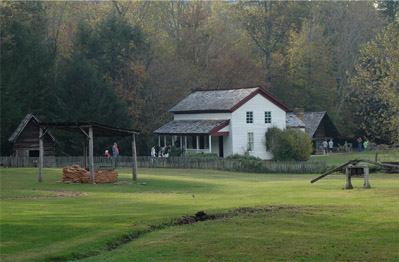 |
Actually, the literature says that the cantilever construction originated centuries ago in Europe. At this location, it was intended for cold-weather protection for the animals as well as equipment storage.
At the location of the grist mill a number of the historical buildings of Cades Cove had been moved and reconstructed. In the right picture above are the Gregg-Cable house, the corn crib and another barn, the smokehouse, the molasses furnace under the shed, and at the extreme right, the cane mill for extracting juice for sorghum molasses. The long pole is for yoking to a horse or mule to circle the press and operate the rollers.
 | 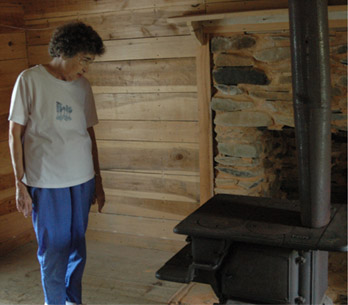 |
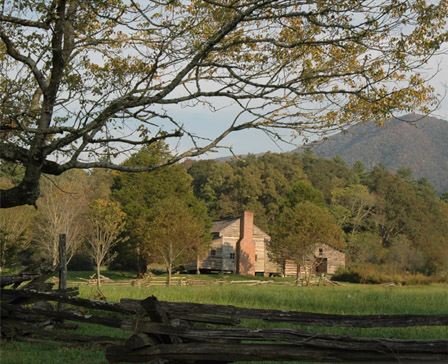 | Several of the original farm houses had been preserved. Dan Lawson built his house in 1856 on land bought from his father-in-law, Peter Cable. The brick for the chimney were made on site. The original house was built with hewn logs, but later additions used sawed planks available after sawmills came to the valley. There was a granary and a smokehouse as additional buildings. |
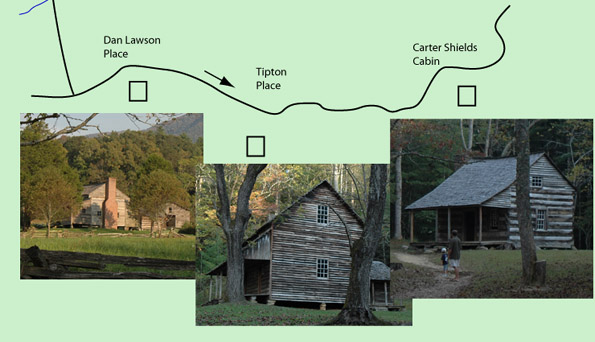
"Col. Hamp" Tipton had his house built in the early 1870s. We saw the Tipton name on some of the gravestones at the Methodist church. The Carter Shields cabin was built on land he bought in 1910. A wound suffered in the Battle of Shiloh left George Washington "Carter" Shields crippled for life. (This historical information is taken from the booklet "Cades Cove Tour" obtained in the Park. )
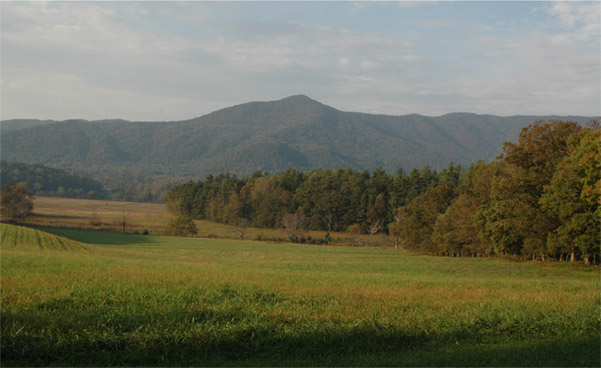
| To Stone Mountain hike |
2006